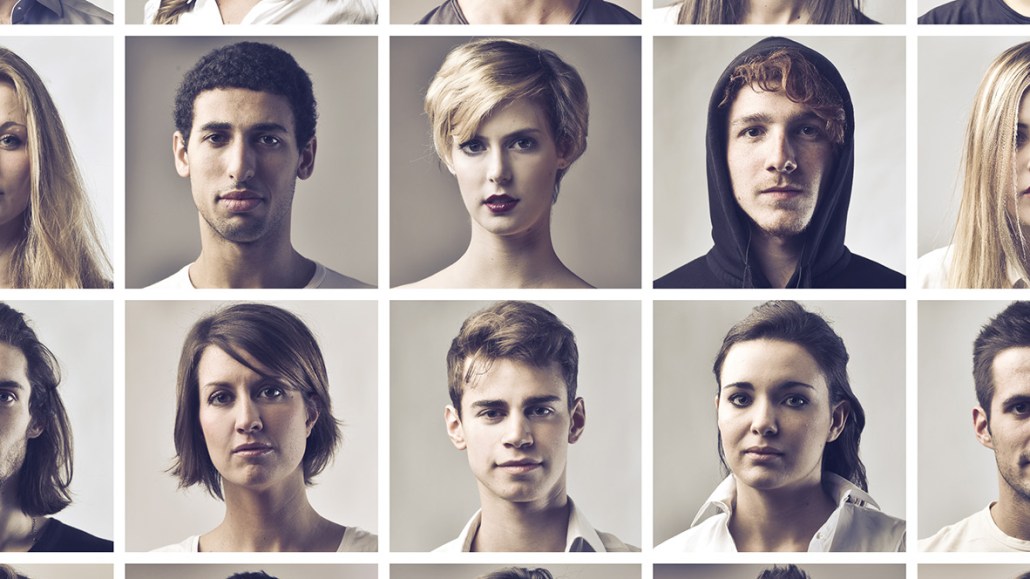Save 50% on a 3-month Digiday+ membership. Ends Dec 5.

While a lot of lip service has been paid to tackling the lack of diversity in the ad industry, evidence is building that U.K. agencies are starting to act.
And this time, they want results: “We thought we couldn’t go to another talk where they say that diversity is a problem and not do anything about it,” Nadya Powell, managing director of ad agency Sunshine, told Digiday. “We know we need to sort it out, but we need concrete evidence.”
Powell is the part of The Great British Diversity Experiment, which this week started running a “diversity hackathon” with four other agency leaders from Lost Boys, Creative Social, Mr President and Levity.
The experiment will give teams made up of both male and female members from diverse ethnicities six weeks to come up with ideas on how to stop food waste in the home, in partnership with Tesco.
As the teams work together, they will be monitored by strategy consultancy Flamingo, which in April will produce a report figuring out whether diverse teams produce better outcomes and what the positives and negatives are of working with people who don’t look or sound like you. The consultants will also give agencies ways to increase diversity in their ranks.
This is just one of the many schemes and initiatives running to promote gender and ethnic diversity in the industry. The IPA (Institute of Practitioners in Advertising) has also released research into the diversity structure of creative and media agencies. The hope is that climbing this league table will work as a kind of “badge of honor,” which will help attract clients and also talent.

Ad position: web_incontent_pos1
It has also set some pretty ambitious goals: By 2020, it wants women to hold 40 percent of the senior positions in ad land (compared to its current 30.5 percent). Also by 2020, it wants 15 percent of leadership positions filled by those from BAME backgrounds (black, Asian, Middle Eastern).
The IPA is also trying to plug in some gaps. At a certain level in the business, women will leave to start families but won’t come back to work because of a gap in skills, said Knox. To combat this, the IPA is putting together a program with She’s Back, the organization set up to coach women back into the workplace. The program will bring together mentors and offering training in skills that employees feel they are lacking from their time out of their jobs.
Of course, there has already been plenty of research done that proves the fact that diversity is good for business: Karen Blackett, Chairwoman of Mediacom, cited, for example, McKinsey’s recent Diversity Matters Report, which shows ethnically diverse companies are 35 percent more likely to outperform those that are less so.
“Having a diverse workplace is about future-proofing your business,”she said. “And the ethnicity in media agencies does not reflect the makeup of London, so you are not going to grow your business.” About 40 percent of London is non-white, according to latest government numbers.
Instead, Blackett suggests increasing the number of apprenticeships rather than simply hiring graduates from top-tier universities.
Ad position: web_incontent_pos2
Mediacom’s own apprenticeship program takes in each year between 10 and 15 people without university qualifications and rotates them around the departments. At the end of the year, they get a marketing qualification and a job at the agency.
Of course, there is no real way of making sure agencies actually hit numbers — even if they sign onto certain initiatives. “We’re not going to chuck people out of membership if they don’t make these goals,” admitted IPA president Tom Knox, who’s under no illusion that not every agency will necessarily reach this benchmark. “As a trade body, we represent the membership; we can’t coerce agencies into doing things.”
The only people who can coerce agencies might be in the clients. In the U.S., clients have begun to ask questions about the makeup of their agency teams, a consistent pressure that forces agencies to make changes.
Blackett thinks a change in agency recruitment practices will help. “It’s a bit of an excuse when you hear people say they don’t get the diverse candidates applying. Either the candidates don’t know about it, in which case it’s not being posted in the right places, or they can’t see anyone who looks like them in the organization, in which case nothing is going to change.”
There are measures that are more cost effective too, like unconscious-bias training and using a panel of interviewees, rather than just one, for more senior hires.
“Our ethnic diversity has increased from 12 percent in 2011 to 18 percent of employees,” said Blackett, “I can look at our performance over the last five years and see we have maintained market leadership. This is down to increasing our own ethnic diversity and understanding consumers.”
More in Marketing

Ulta, Best Buy and Adidas dominate AI holiday shopping mentions
The brands that are seeing the biggest boost from this shift in consumer behavior are some of the biggest retailers.

U.K. retailer Boots leads brand efforts to invest in ad creative’s data layer
For media dollars to make an impact, brands need ad creative that actually hits. More CMOs are investing in pre- and post-flight measurement.

‘AI is permeating everything we do’: How Guitar Center developed 2 AI tools this year
This summer, the company launched a chatbot called Rig Advisor to help customers find the right instruments and products.
Ad position: web_bfu
